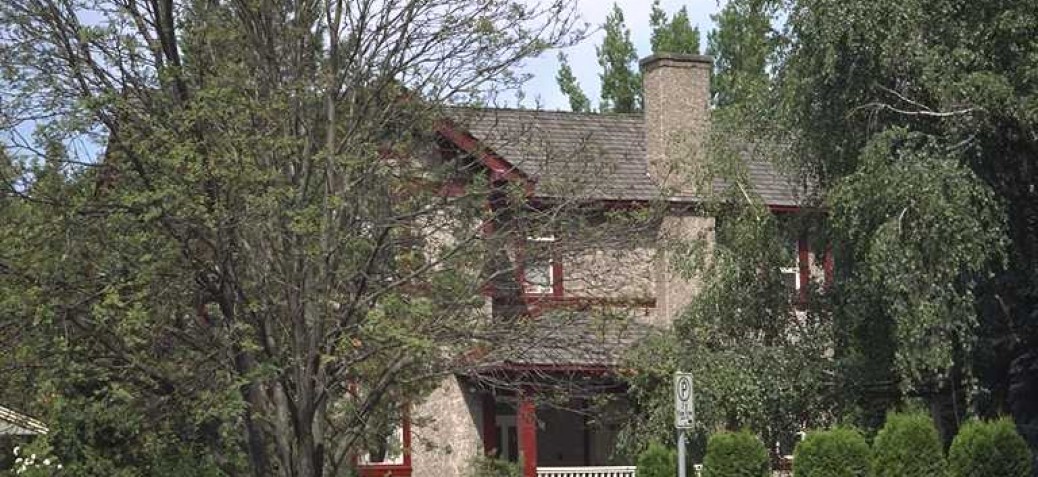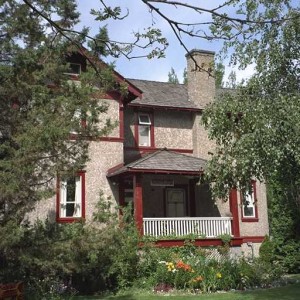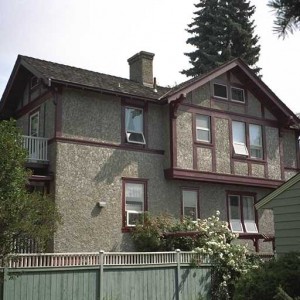Annie Stirling House
Place Description
The historic place is the two-storey wood Anne Stirling House, built in 1910 in a fusion of the Tudor Revival and Arts and Crafts styles, and located at 2178 Pandosy Street in Kelowna's South Central neighbourhood.
Heritage Value
The Anne Stirling House is valued in part for its association with the two prominent families in the community, the Stirlings and the McLarens, and also for the well-preserved fusion of the Tudor Revival and Arts and Crafts styles and for having been built during the first major development phase after the City of Kelowna's incorporation in 1905.
This substantial house was built around 1910 for Anna Stirling (born 1837), the widow of Thomas Mayne Stirling of Muiravonside, Scotland, and the mother of Thomas Willing Stirling, a prominent Kelowna fruit-grower and investor. At that time T.W. Stirlings recently built home, Cadder House (see 2124 Pandosy Street), and this house occupied the corners of a block. The adjacent cross-street, Glenwood Avenue, and the other nearby houses are all more recent insertions. The Stirlings left their mark on Kelowna and then returned to Scotland. Anna Stirling probably went back to Scotland shortly after 1913, when her son returned to Britain for military service during WWI, and certainly by the time he re-settled in Scotland in 1921. By 1924 the house was owned by Kenneth McLaren and Bessie McLaren, since they added a sunroom, built by prominent contractor J. Curts, in that year. The McLaren family, who were in the lumber business, occupied the residence until the 1950s.
The house also has significance for having been preserved under the terms of a Heritage Revitalization Agreement, which was executed in 2002.
The historic place also has value for its architectural prominence and design. The large, two-storey house has the ornamental wood strips characteristic of the Tudor Revival style (in Tudor times the timbers were structural), but also the greater simplicity and emphasis on form characteristic of the Arts and Crafts style. The original form is clear visible, despite minor alterations and additions.
Character Defining Elements
Mature trees spaced around the property, with lawn to the street and a high continuous evergreen hedge
- Sitting, well back on the property
- Residential form, scale, and massing, expressed by the 2-storey height and rectangular plan
- Stucco walls with prominent horizontal and vertical Tudor Revival wood trim
- Medium-pitch gabled roof with a cross-gable at the left, facing the street
- Entrance porch, with two wood corner posts and wood handrail
- Entrance door, with four decorative stained-glass panels
- Corbelled brick chimney






